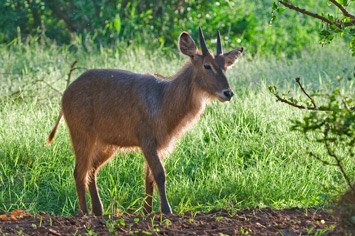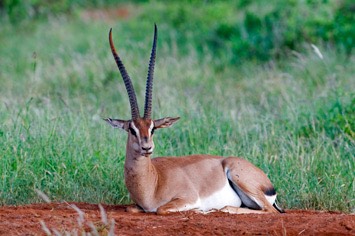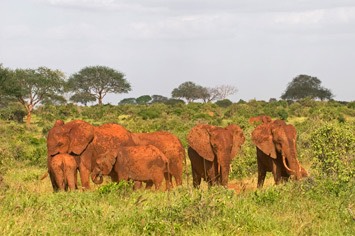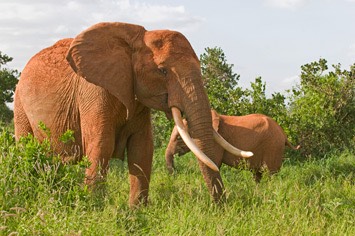Saturday, 20/12/2008: Nairobi – Amboseli National Park
What with the thin walls that let us hear almost every whispered word from next door, and the rock-hard pillows, we didn’t feel too refreshed in the morning. Then, starting the car proved to be rather challenging. Switching ignition coils helped the old petrol engine stutter into life, but judging by the condition of the spare it seemed prudent to invest in a new coil. So we stopped at a duka (small shop) selling car parts in Rongai and bought a shiny new coil to hold in reserve. It wouldn’t be long before it was pressed into service.
The first half of our drive was all on tarmac and quite good, and we even saw some wild zebra and gazelles shortly after leaving Nairobi. We passed under the Ngong Hills, where Denys Finch-Hatton, Karen Blixen’s lover in “Out of Africa” is buried. Apparently today it is no longer the lions that keep watch over his grave, but the pickpockets from a nearby slum. Our route took us to Namanga, a town on the border with Tanzania, where we stopped to refuel. We hadn’t even got out of the car, when we were already set upon by countless Masai women trying to sell us their beaded jewelry. They were quite pushy, so we were glad when we were on our way again. After Namanga the tarmac road deteriorated to a dirt track, giving us a first idea of what we could expect in Amboseli.
It turned out that entering Amboseli National Park through one of the smaller gates wasn’t quite as easy as expected, as we could not pay our entrance fee there. After quite a while spent discussing this problem, we were given a piece of paper stating that we had entered the park and we had to promise to go to the main gate during the next day to pay our fees. When we were on our way again, the first animals we saw were a herd of goats! We encountered more domestic animals on our way to the campsite in the very south of the National Park, and we were quite shocked to see the degraded state of the habitat.
Amboseli lies right on the border with Tanzania, and many elephants cross this border quite regularly. In Tanzania it is still possible to hunt elephants legally, while the Masai in Kenya don’t allow anybody else to kill “their” elephants, so that many elephants cluster into the relative security of Amboseli National Park. Nowadays, there are about 800 elephants there, some of which sport enormous ivory tusks, all crowded into the relatively small area of the national park. The high density of wild animals and the many herds of domestic animals such as cattle, sheep and goats, which are driven into the park by Masai herders in order to drink there, contribute to heavy overgrazing in Amboseli. There are few plants, and the landscape was more like a desert with a few trees and bushes. After Samburu and the Masai Mara, our first impression was therefore not all that good.
At the Masai run campsite in the south of Amboseli, we were immediately greeted by many masai, who all wanted to “help” and would not leave no matter how politely we declined their offers. They stood right next to our tent or table and kept staring at us, which was rather irritating and made us feel a little uncomfortable. Eventually, they got the message and left us alone, although there were always some who came calling in at regular intervals, just to make sure we weren’t willing to pay them some money for their “services” after all. Later we found out that the showers were not working, which seemed rather unfortunate in dusty Amboseli, as even after short drives we were already looking forward to rinsing the dust off! From the campsite we had a view of Mount Kilimanjaro, which was entirely hidden in the clouds for most of the time.
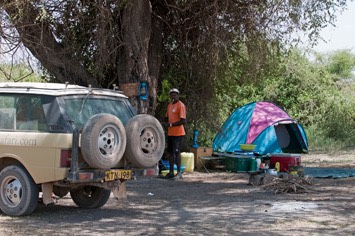
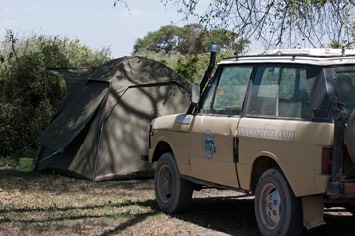
After pitching the tents, we left Charles with his newly found “friends” and set off on our first game drive. We managed to see our first wildebeest of the trip as well as some very pretty crowned cranes.
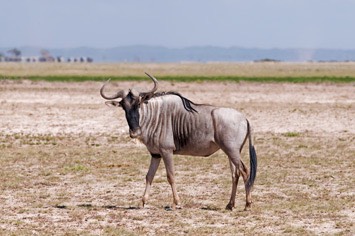
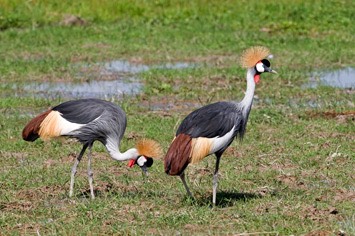
Amboseli is especially famous for its elephants, which are easy to find in the desert-like habitat. In the middle of Amboseli there is a series of swamps, which are fed from the melted snow on Kilimanjaro. These swamps were full of lush green vegetation and this was where most animals congregated; the elephants could be found there for a large part of the day. We managed to see hundreds of elephants in the swamps, some of which sank so deep they nearly disappeared in it! They looked like big boulders until they briefly flicked their big ears.
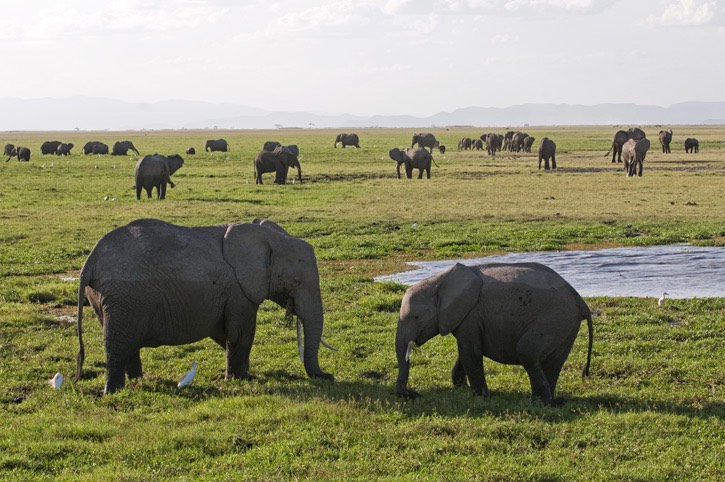
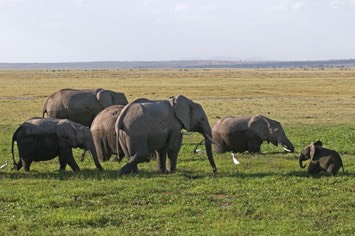
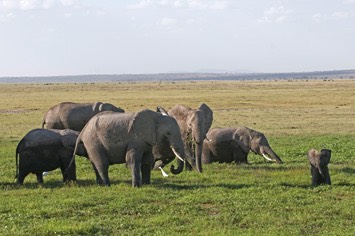
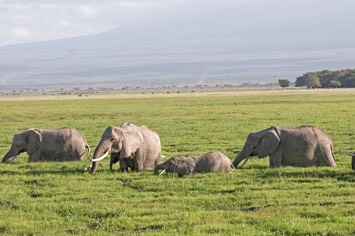
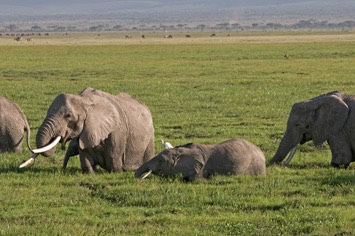
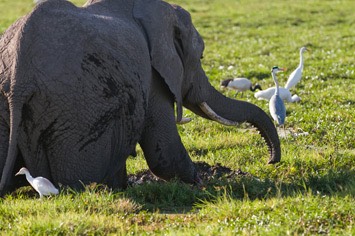
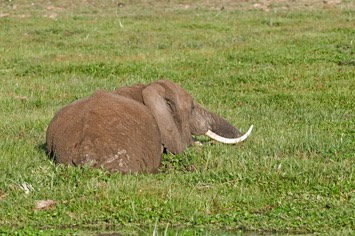
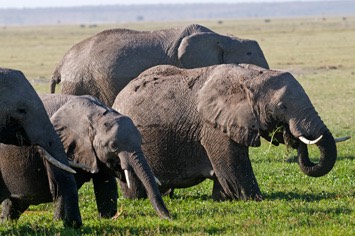
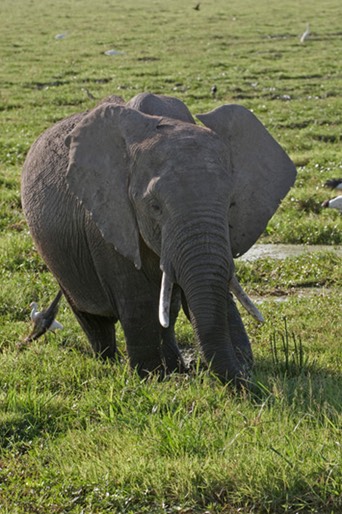
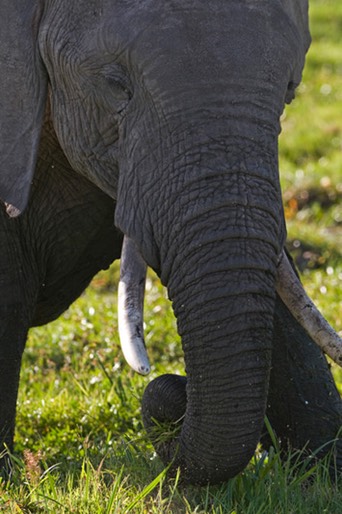
There were elephants feeding all around us and we could also watch some young bulls testing their strength in pushing matches against each other.
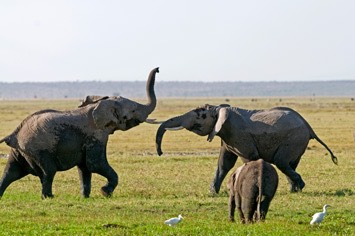
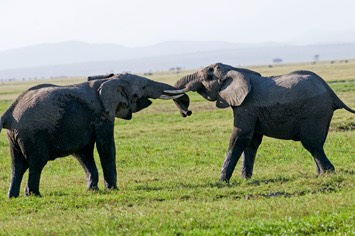
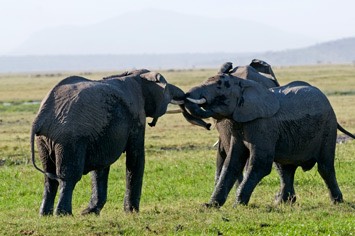
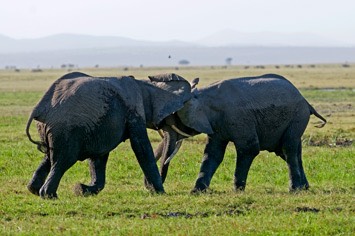
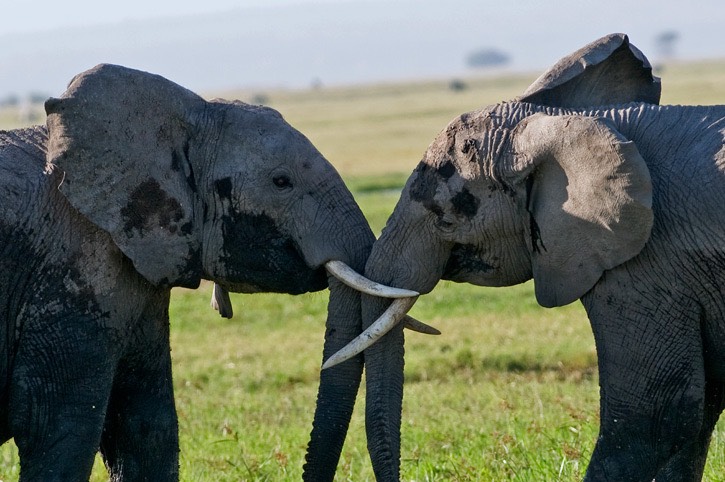
We had found a good place to stop on top of a small bridge, where we got good views of a lot of the elephants around us. After some time a big bull elephant came bumbling towards us. Used to the friendly elephants from Samburu, we decided to stay put and simply let him pass. He thought differently though, and decided he didn’t want to share the bridge with anybody else, so he kept coming towards us, making it clear that he had the right of way by gently shooing us away with his trunk. We got the message and backed off as soon as the other tourist vans, which were parked behind us, had made some space. By this time the bull had come quite close, but he never seemed aggressive. Nevertheless, one of the passengers in a van behind us couldn’t believe that we had stayed so calm in the face of such a big elephant! We decided not to tell him that we had actually been much closer to elephants before, as he surely would have thought that we were completely mad! The bull took his time drinking from the water running under the bridge, before ambling off into the swamps and allowing us to move forwards again.
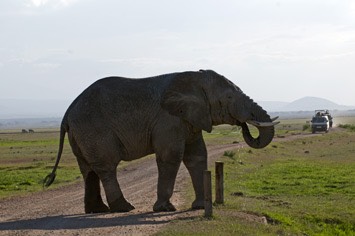
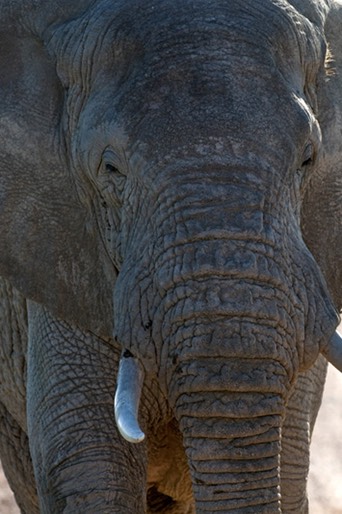
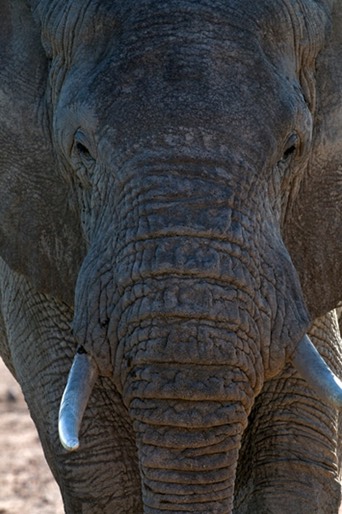
But what a difference in behaviour to the friendly Samburu elephants, who would have simply walked around us! Amboseli’s elephants are overall rather different; they are quite big and very grey (thanks to the grey dusty soil in the area), and some of them seem to be a little tired of the bothersome tourist vans, of which there were many. Amboseli is one of the parks that tourists frequently visit, as it is so easy to see the elephants there. However, that means that there are always lots of vehicles clustered around sightings. On one occasion we saw an angry elephant threatening a mini van.
We felt rather sorry for the tiny elephant calves, which often completely disappeared in the swamps. It must sometimes be quite scary for them, when they lose the ground underneath their feet.
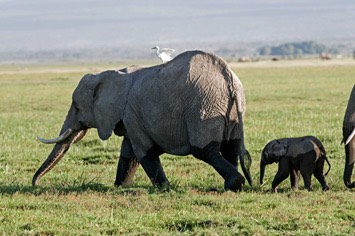
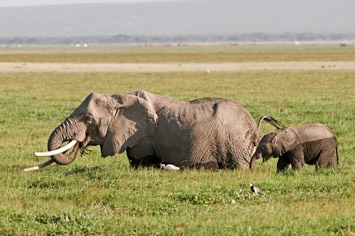
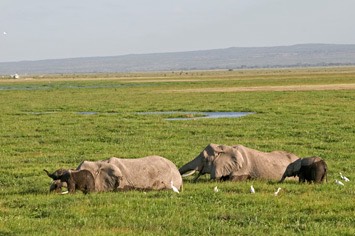
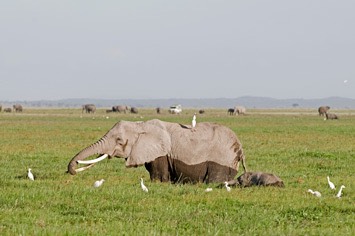
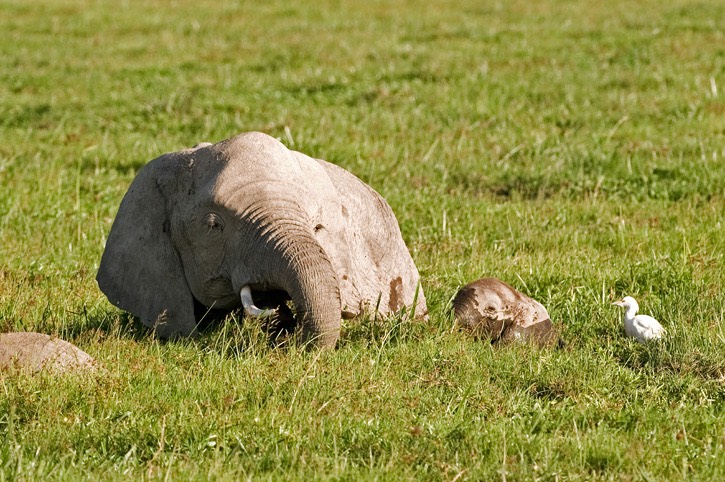
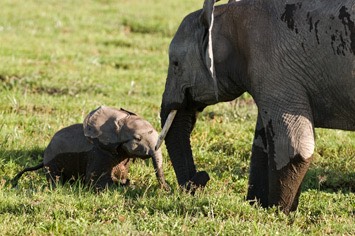
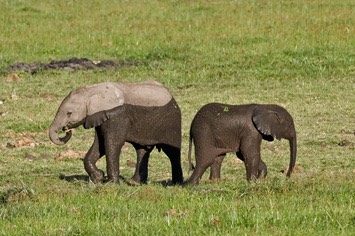
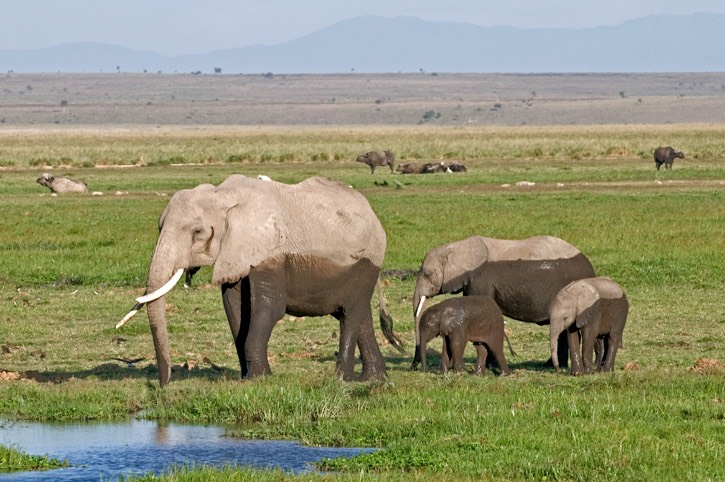
At some point we watched two young bulls playing with each other and then even performing a little dance for our benefit, before trying to mount onto a much smaller calf. They were much larger and heavier than the poor little one, and it was forced down onto the ground.
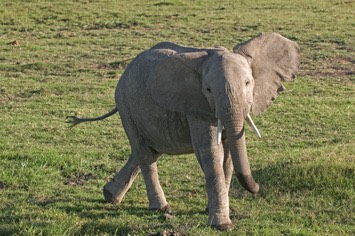
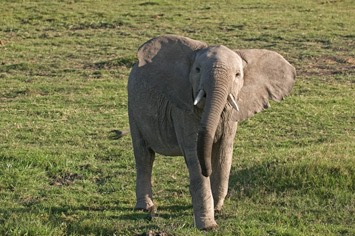
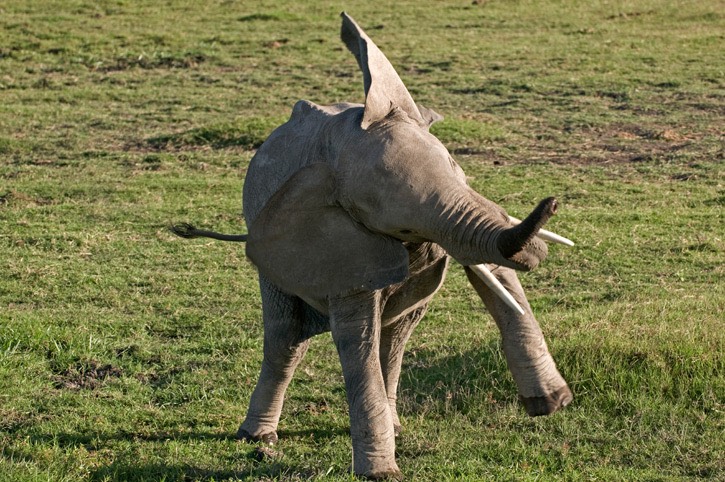
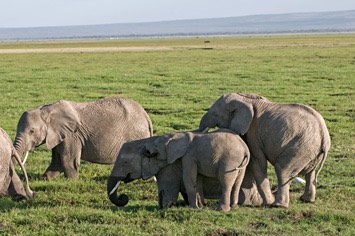
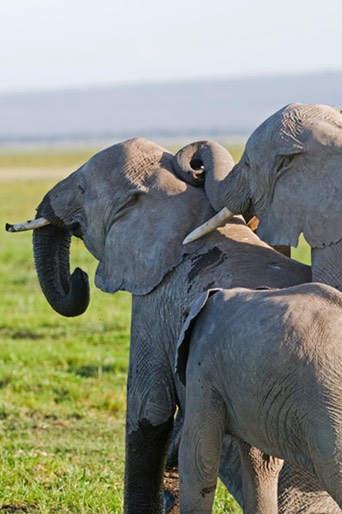
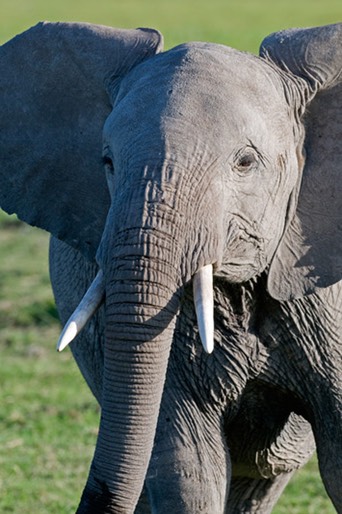
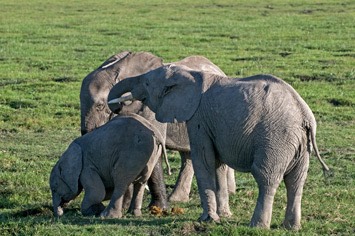
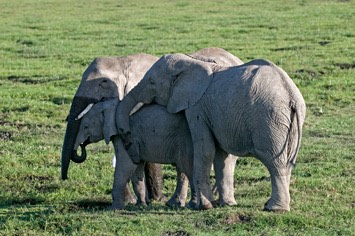
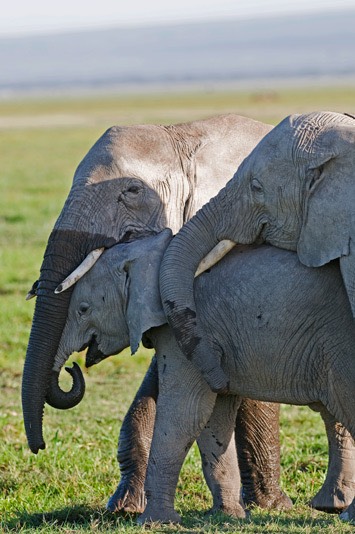
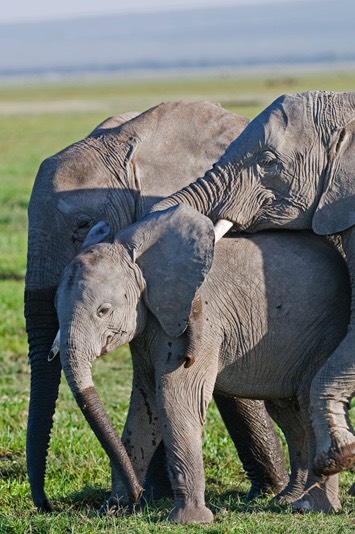
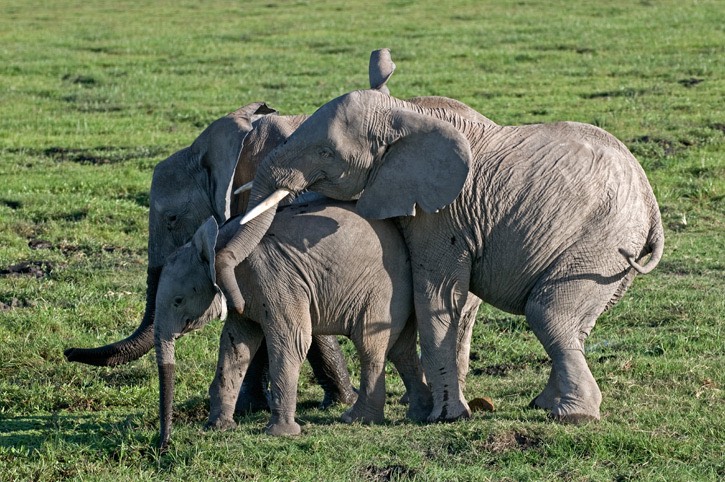
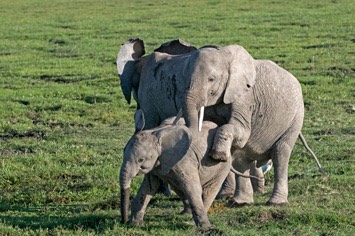
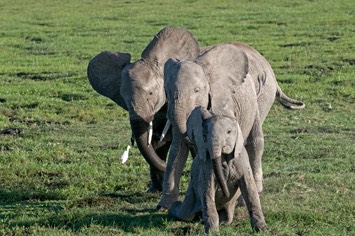
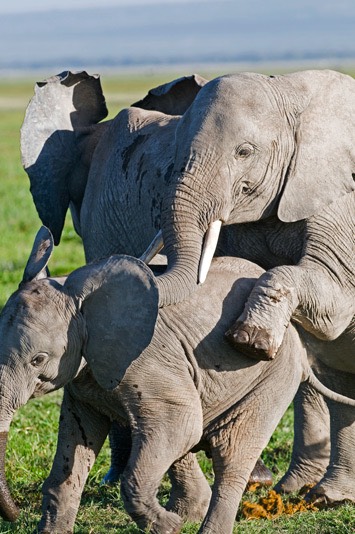
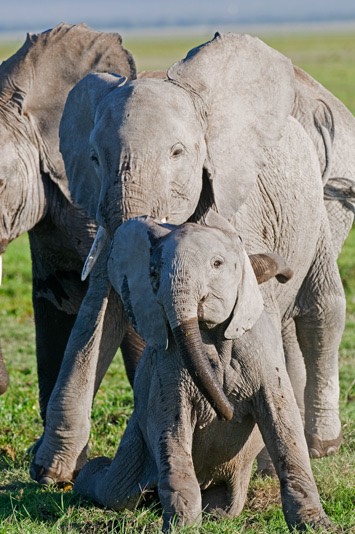
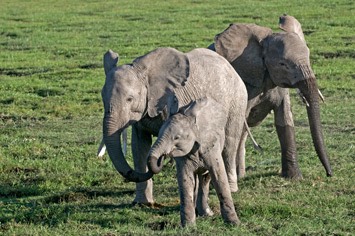
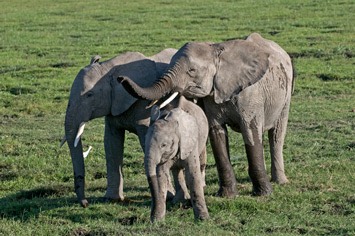
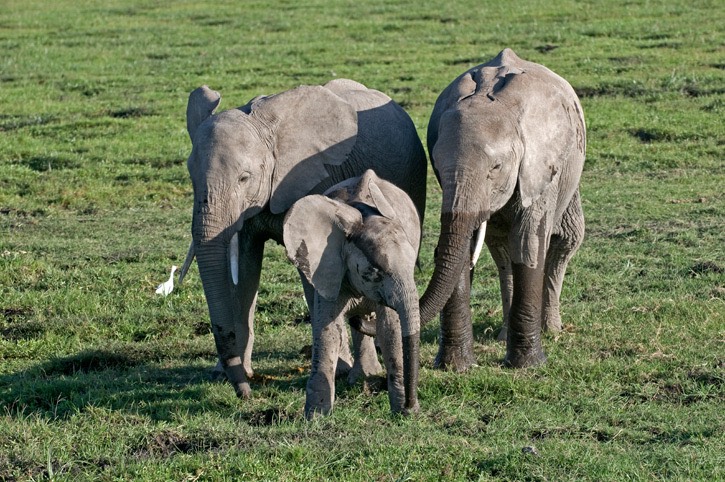
After a while of this rough play, one of the big females obviously had enough of this unruly behaviour by the naughty boys. She walked up to one of them and gave him a good shove up the backside with her long tusks! He screamed in indignation and ran away, although it seemed that the lesson didn’t really sink in, as we could see him start the same game all over again shortly afterwards. All spectators looked on laughing, thinking that the young bull got his deserved punishment!
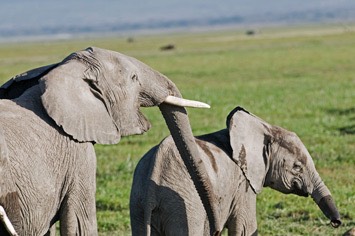
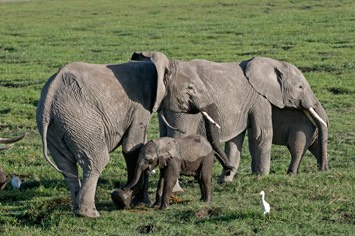
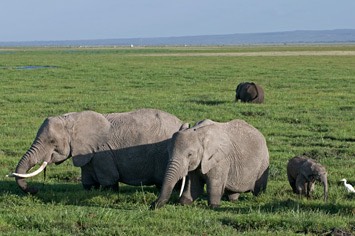
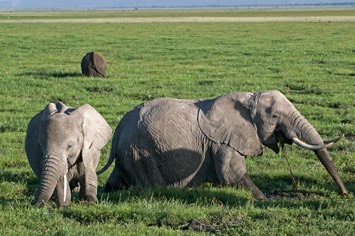
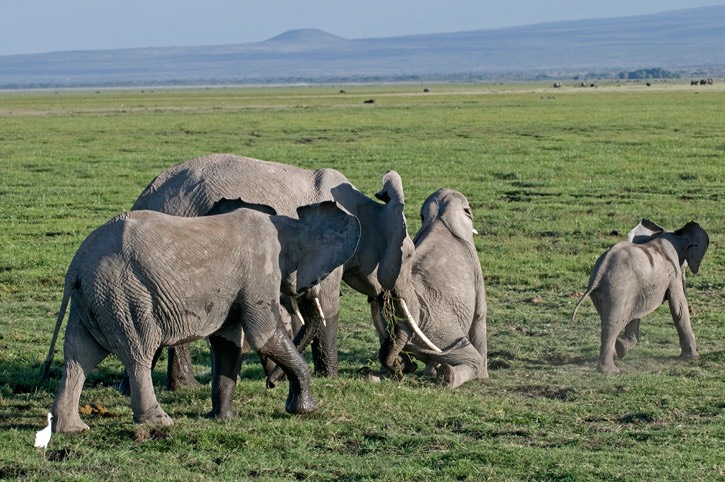
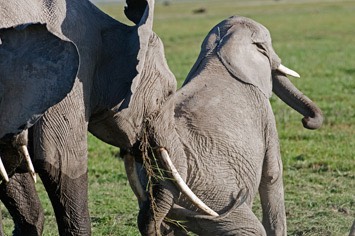
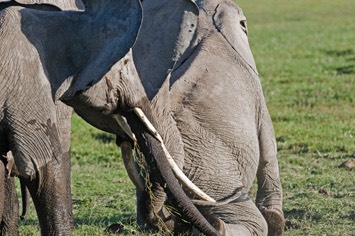
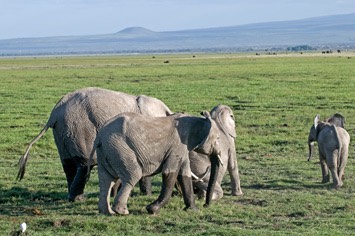
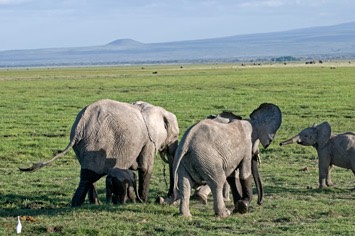
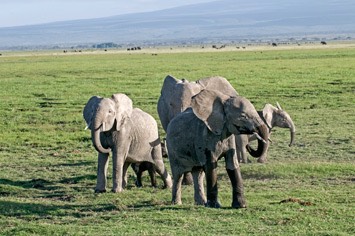
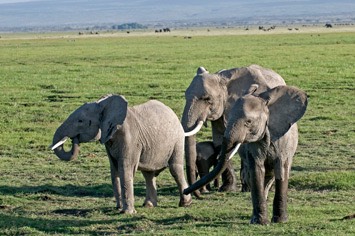
On the way back to the campsite we were told about a sighting of two lions, so we made a brief detour to find two sleeping lions surrounded by at least ten mini vans. We didn’t stay long before heading back to the campsite. The only problem was that the track we had chosen was not an easy one to drive, and we didn’t make as good progress as we had hoped. On the way we were treated to zebras in the sunset, and we were glad when we made it to the campsite just before it got dark.
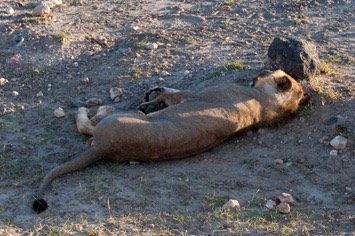
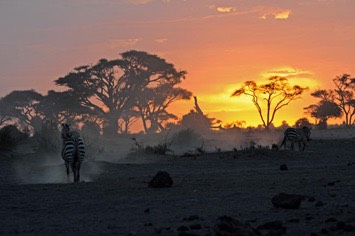
Sunday, 21/12/2008: Amboseli National Park
After yesterday’s half-day experience in Amboseli’s dustbowl we felt that in a way we had already had enough of this park, but as we had told the rangers we would stay for another day, we decided to make the most of it. We set off early in the morning, and we first came across a lone hyena gnawing on the leftovers of an old skeleton. We stayed with it for quite some time and enjoyed this close-up encounter all for ourselves.
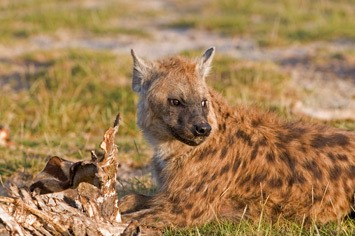
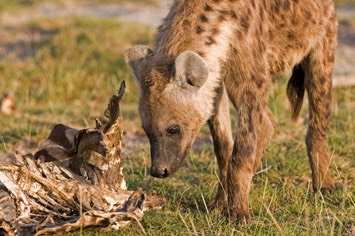
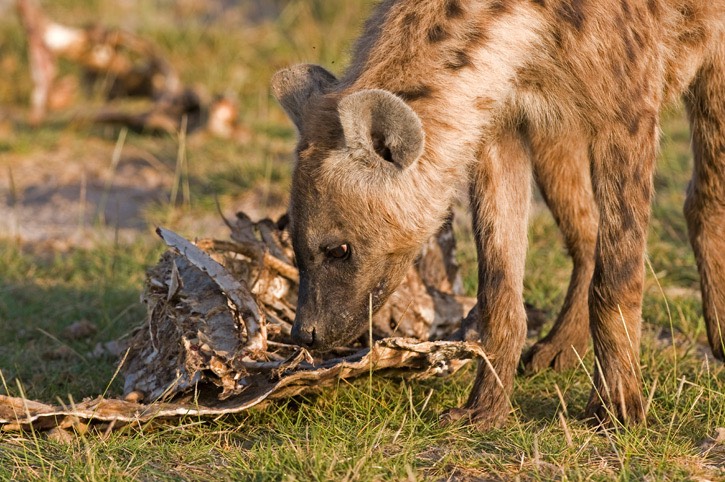
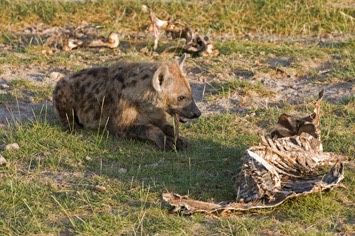
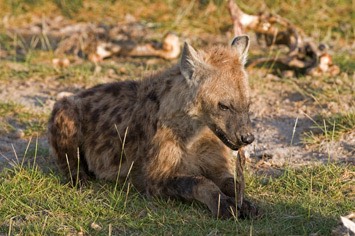
Along the wet margins of the tracks, we came across many different wading birds and blacksmith plovers.
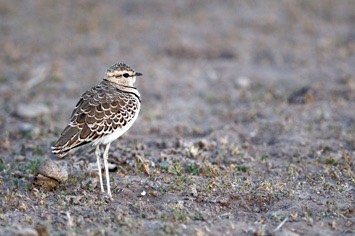
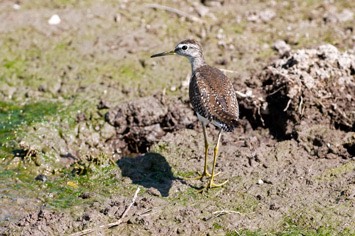
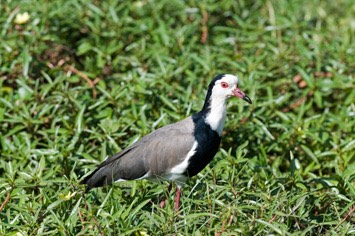
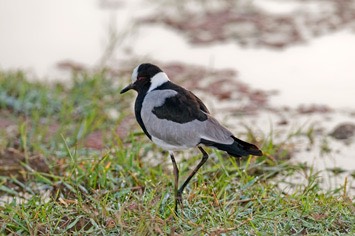
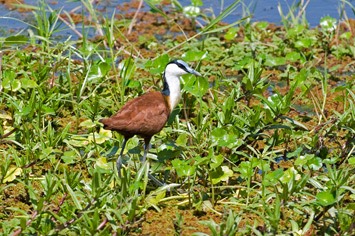
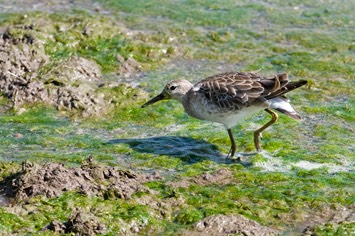
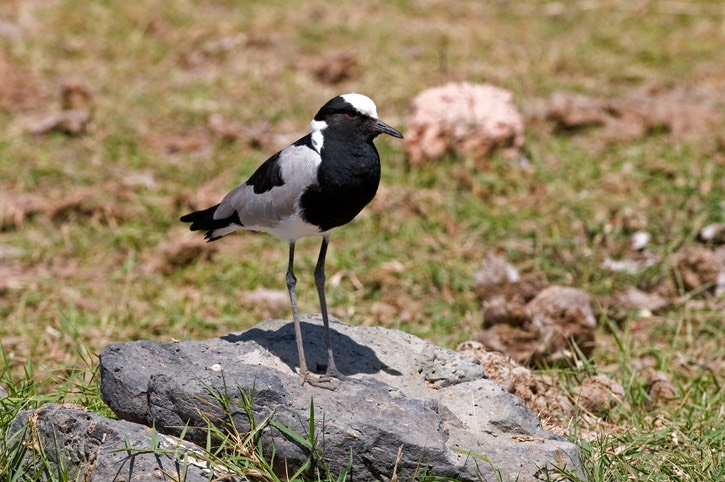
It was still early in the morning, and there were no elephants in the swamps, so we decided to explore the network of tracks to the south of the swamps. Eventually, we came across a family of elephants that was heading in the direction of the swamps, where they would feed during the heat of the day before heading back into the foothills of Kilimanjaro for the night. There were several small calves in the herd and we got some interesting photos of them in the dry landscape.
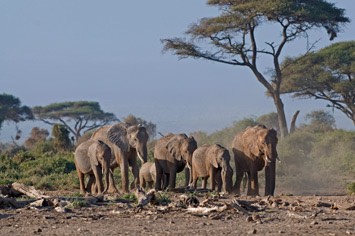
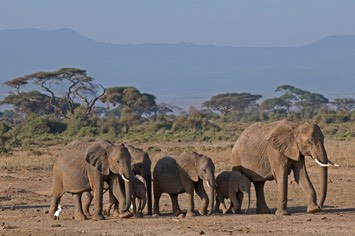
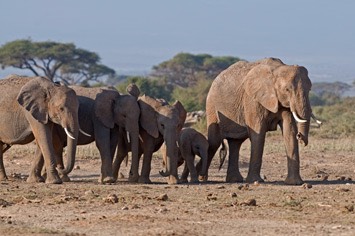
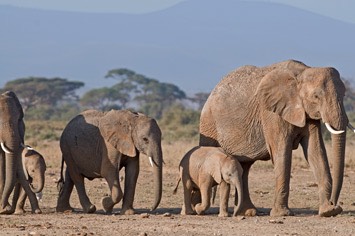
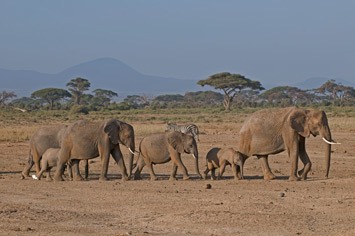
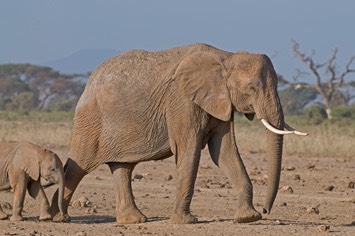
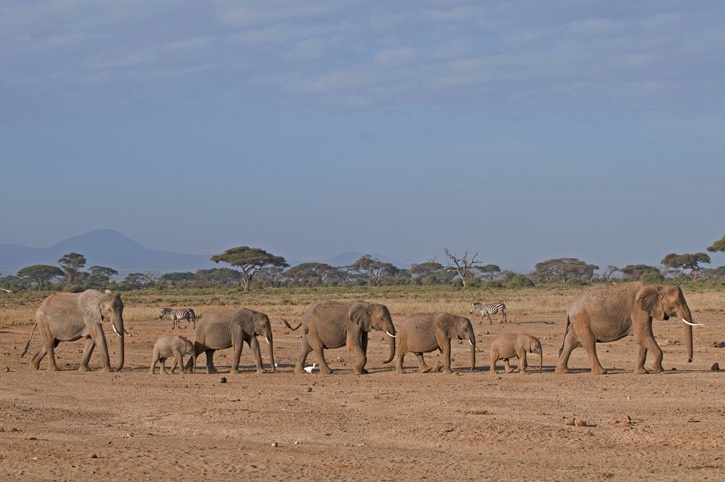
A bit later we came across four lions: two males with decent manes and two females. At first they were out in the open, where they were very easy to see so that had attracted a very large number of vehicles, all jostling for the best position and blocking those in that would have preferred to leave. The lionesses and one of the males soon walked off and hid under a bush quite a way from the track. The remaining lion, which was actually radio-collared, lay down not too far from the vehicles. Off-roading is strictly prohibited in Amboseli, as it would further damage the sparse vegetation, but that didn’t stop one of the cars from approaching the lion in order to get better views and photos than anybody else could. The lion was obviously soon fed up, as he got up and joined the rest of the pride under the bush. It is always amazing to see what stupid things tourists do to get the shot they want!
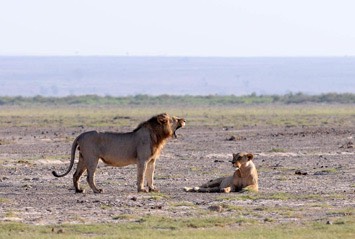
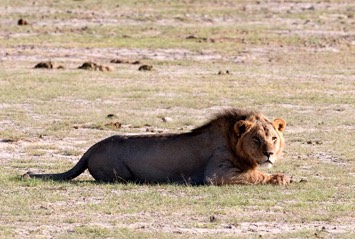
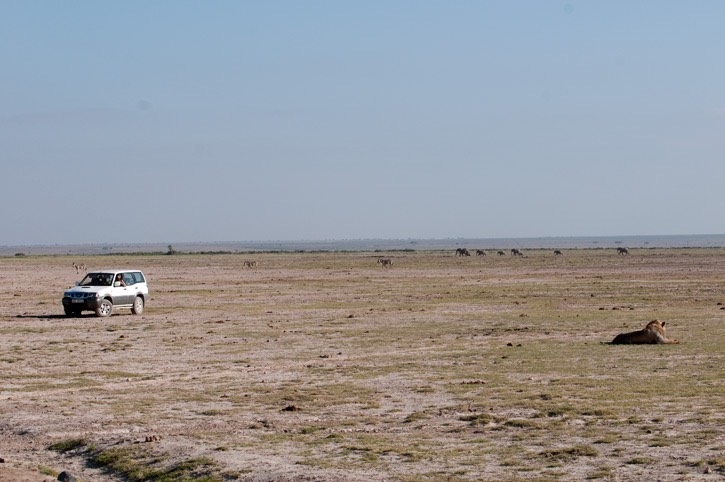
We drove around the outskirts of the swamps, which by then were slowly filling up with elephants, zebras and quite a large number of wildebeest. We even caught a brief glimpse of the snow-topped peak of Mount Kilimanjaro with elephants in the foreground! Unfortunately, it wasn’t the typical postcard shot and it was still very hazy, but we were pleased to have at least a brief look at the famous mountain.
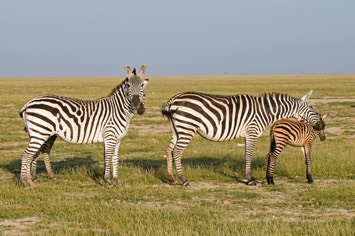
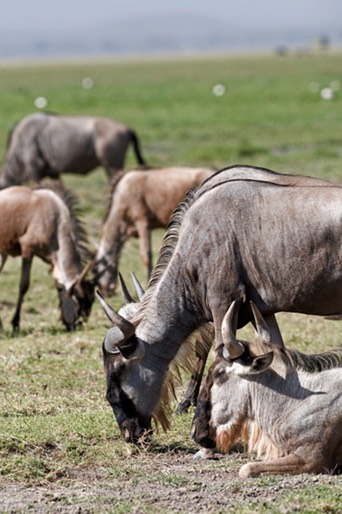
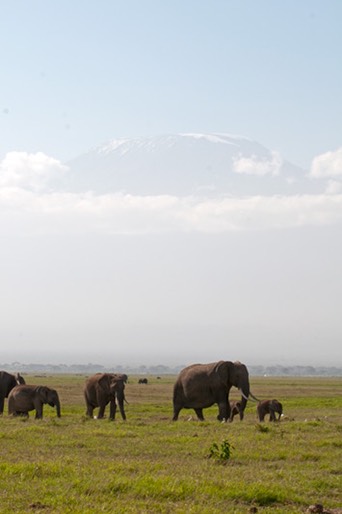
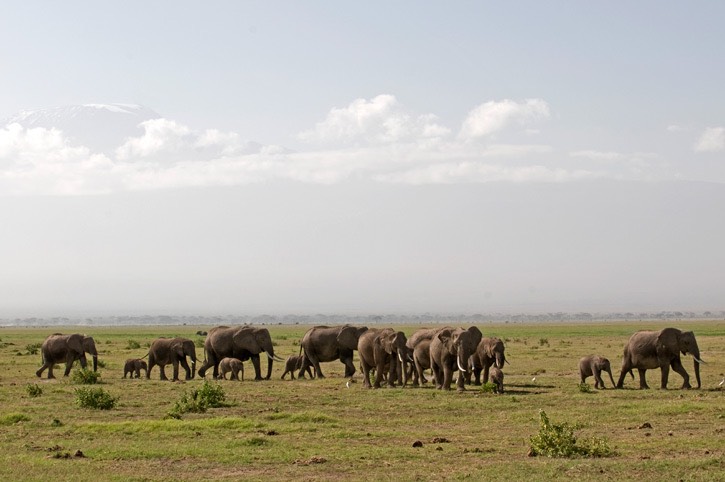
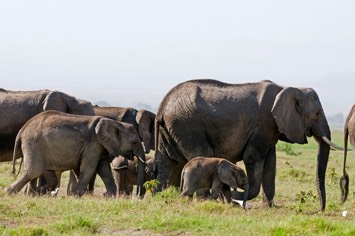
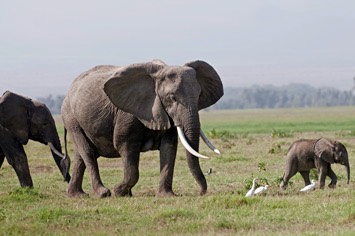
As we still had to go and pay our entrance fee, we decided to head towards the gate. As we drove away from the swamps everything turned dry until we actually crossed over the dry bed of Lake Amboseli. There we saw only a lone jackal, a few zebras and giraffes. Otherwise it was a complete dustbowl with hardly any edible vegetation or water resources for the animals.
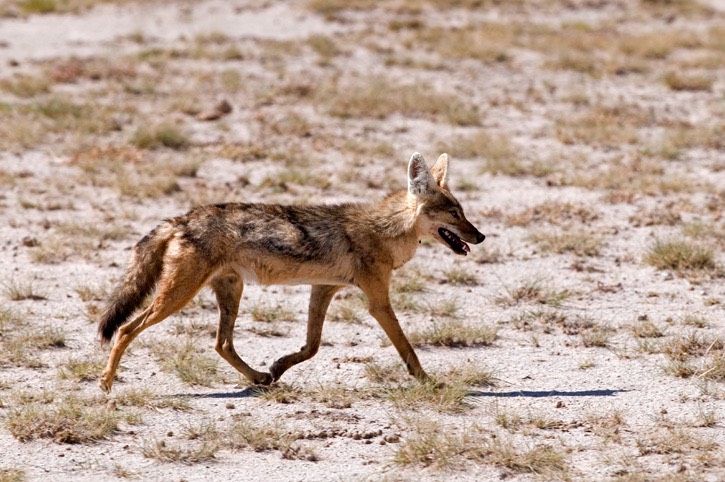
We managed to pay our entrance fee reasonably quickly and headed back around the outskirts of the dry lake towards the promising green vegetation of the swamps. On the way we encountered another herd of cattle with a young Masai boy attending the animals. We later learnt that the situation in Amboseli is difficult, and that an agreement was made such that domestic animals are allowed to drink from water sources in the park during times of drought. However, they are not allowed to linger in the park and feed on the already sparse vegetation, but this is obviously a condition that is very difficult to enforce.
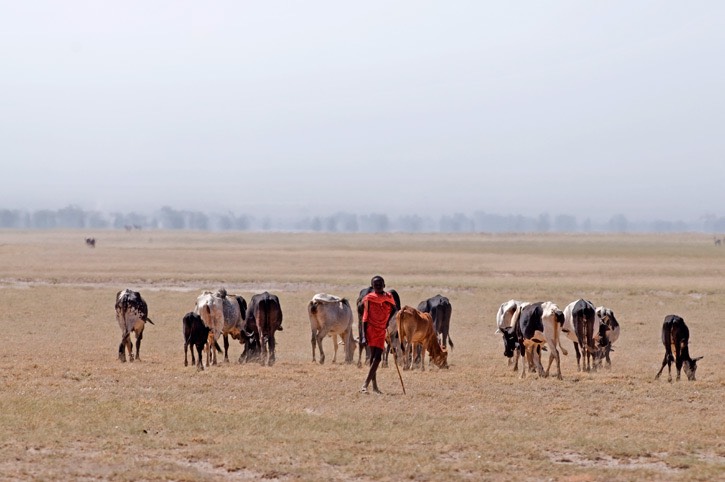
Back near the swamps we came across the expected elephants, but this time we actually saw one threatening two mini vans that had obviously approached too closely.
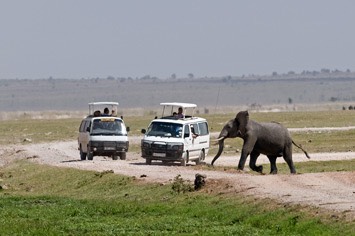
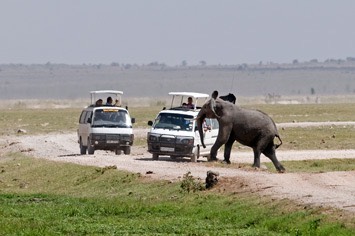
Soon after we came across a big hippo feeding on the green grass, and it was quite a formidable sight to see it emerge from the swamp and wander off. We then decided to head back to the campsite for lunch and a short break.
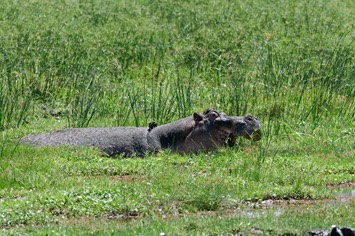
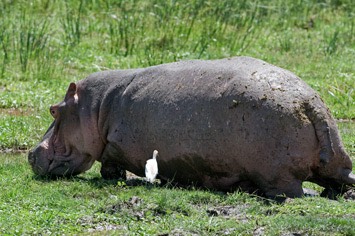
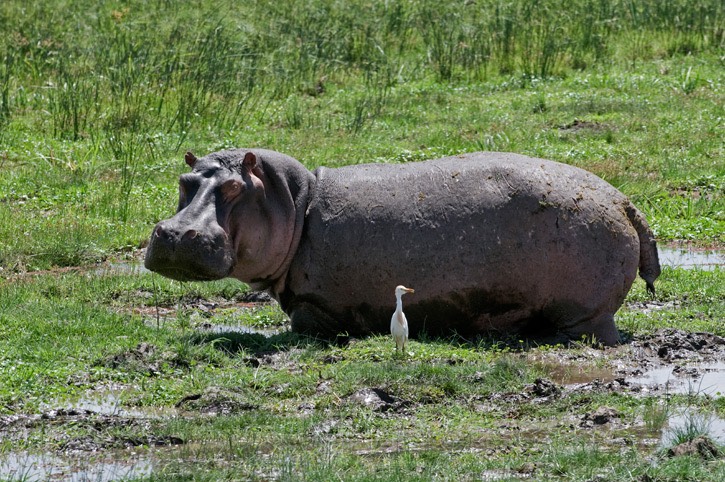
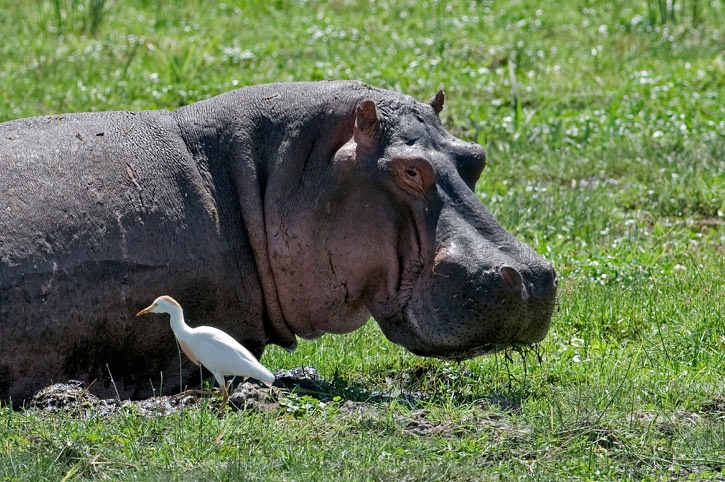
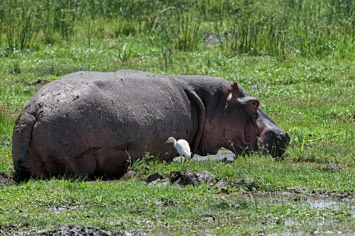
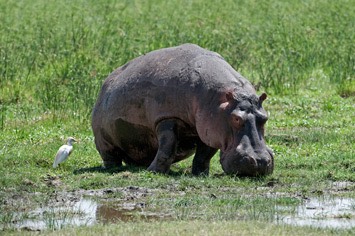
In the afternoon, we headed in the direction of the observation hill. Everything was very dry there and we could see numerous dust devils moving across the dry plains of Amboseli. Even the fighting zebras caused a mini sandstorm.
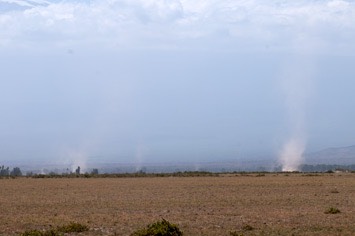
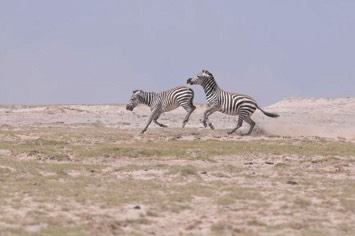
We found a group of elephants having their siesta; some of the calves were sleeping on the ground, while the females slept upright, with their trunks resting on the ground. They seemed very dozy, so we headed on towards the swamps.
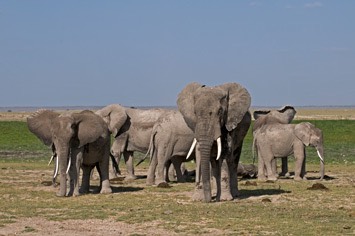
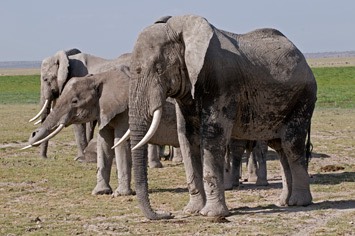
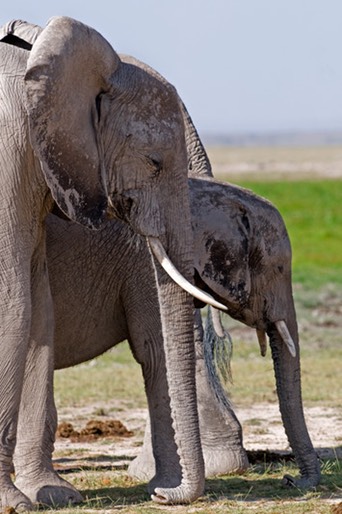
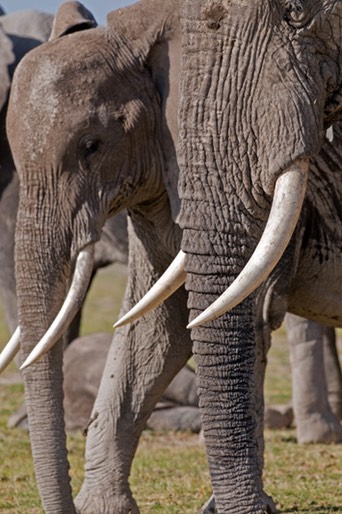
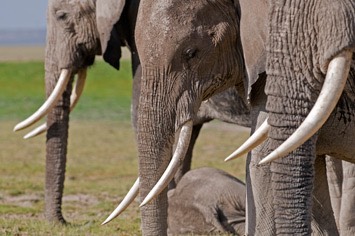
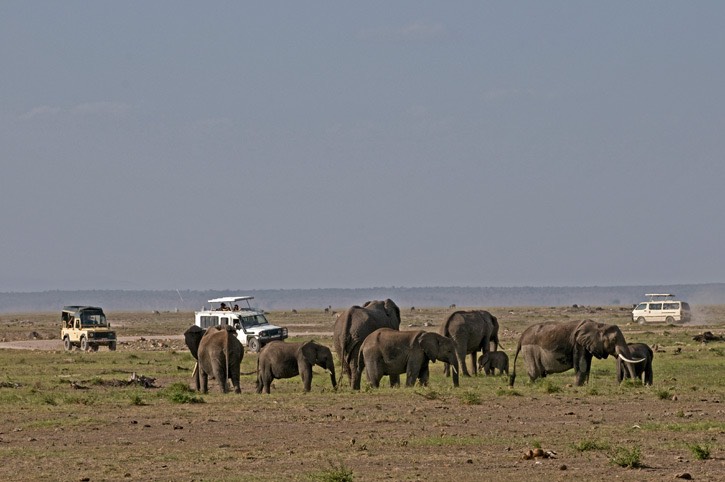
A few zebras and wildebeest posed nicely for us nearby.
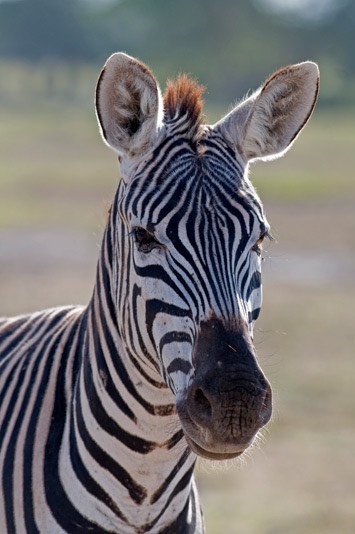
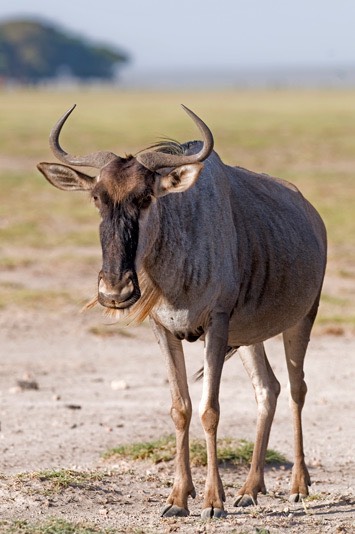
In the swamps the elephants were busy feeding. Wherever they went, they always had lots of cattle egrets in attendance, which were quick in snapping up any small dudus that were scattered by the moving elephants.
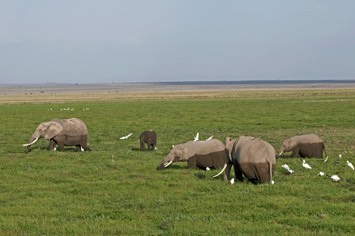
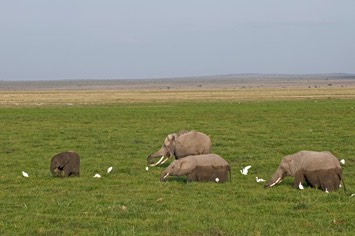
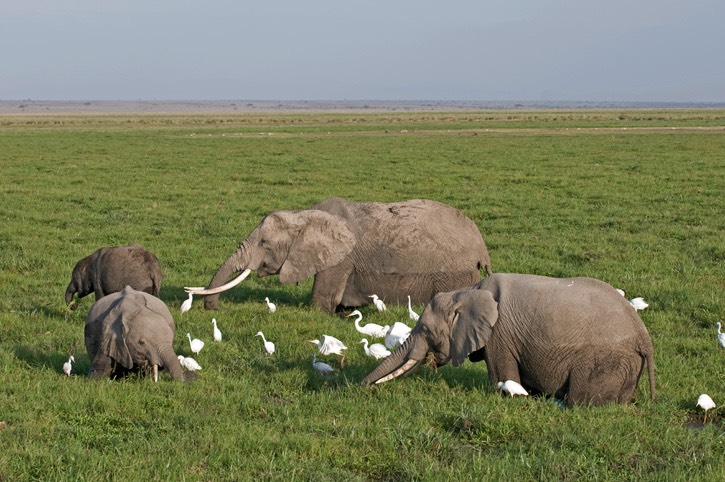
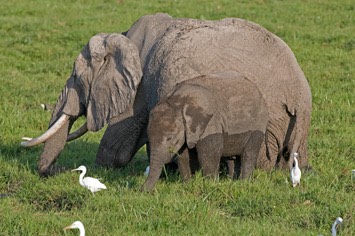
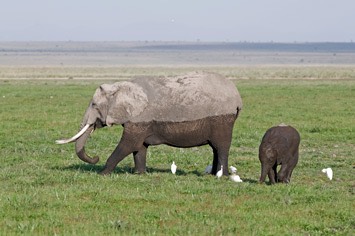
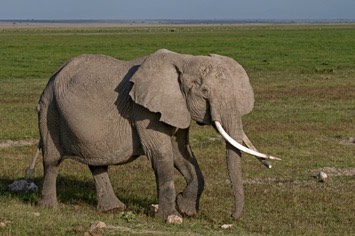
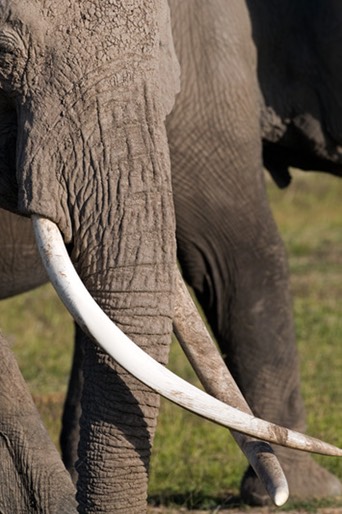
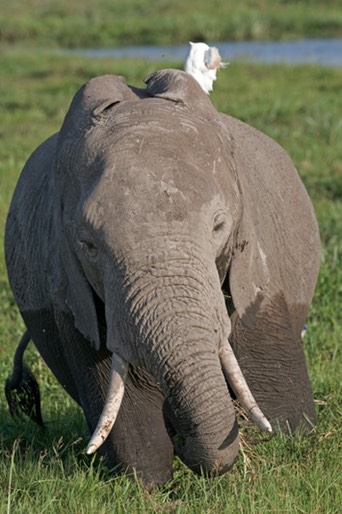
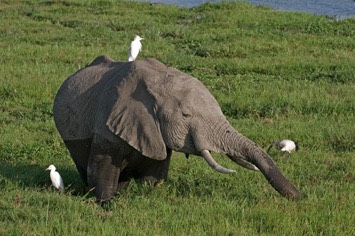
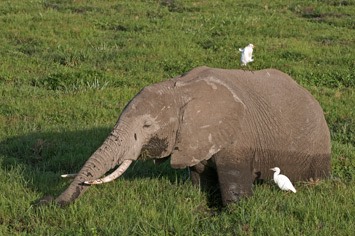
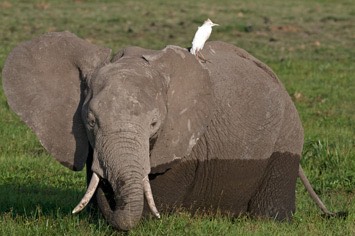
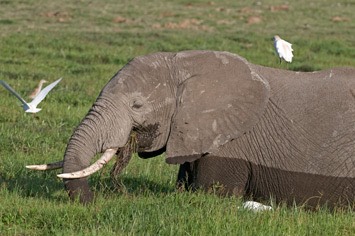
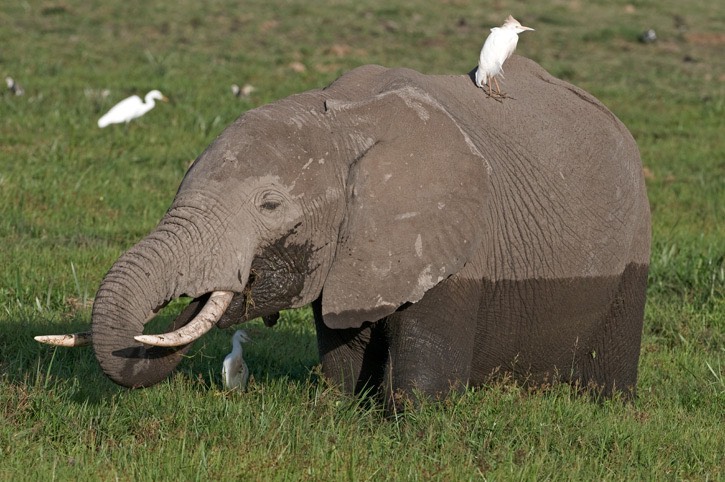
In the warm evening light we came across another resting elephant family. The matriarch sported a radio collar and we later found out that she was called Vicky. She had a tiny calf by her side. The whole family looked quite funny, as they had varying patterns of dry, grey skin and still somewhat wet, much darker skin from their time spent feeding in the swamps. With a lot of animals it was easy to tell how deep they had been in the swamps, from the clear marks of the “tide line” on their sides.
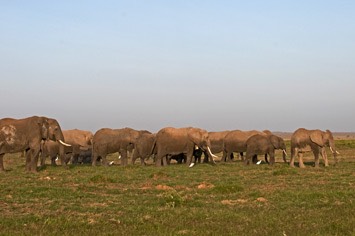
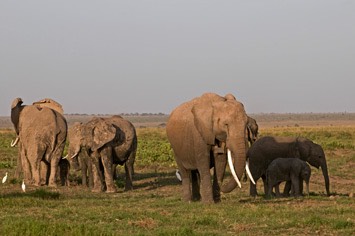
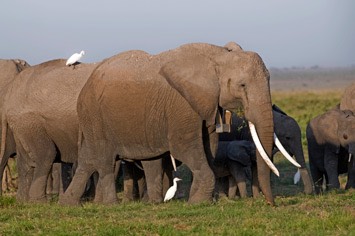
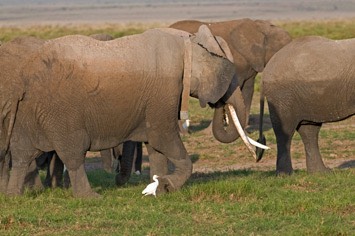
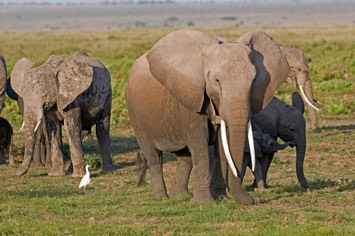
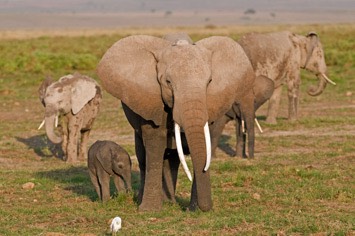
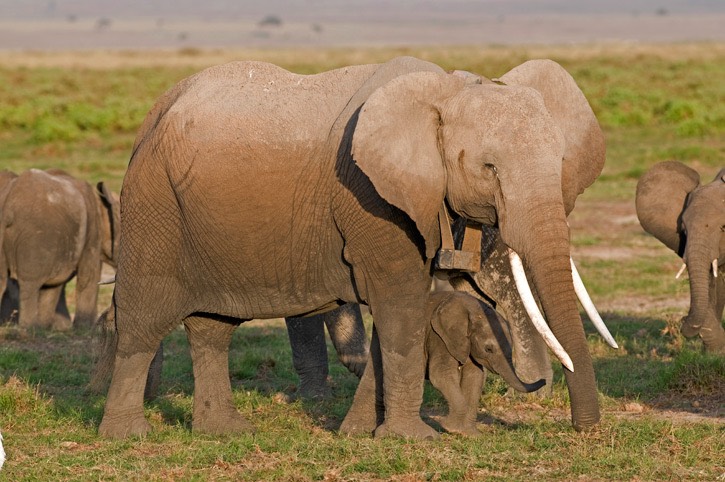
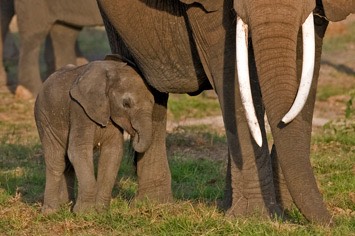
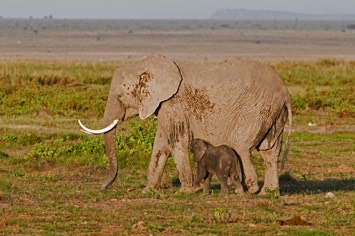
During our last evening in Amboseli, there was still no water in the showers, and the water we needed had to be carried quite some distance from a well. After all the dust we had driven through, we felt in urgent need of a shower and were quite happy to move on. Amboseli is obviously very spectacular for its large numbers of elephants, but we found that otherwise it didn’t have all that much on offer compared with the other parks we had visited already.
Monday, 22/12/2008: Amboseli National Park – Tsavo East National Park
On our last morning in Amboseli we were granted another brief look at Kilimanjaro’s peak and when we left the campsite we even managed to take a picture of the mountain with some elephants in the foreground!
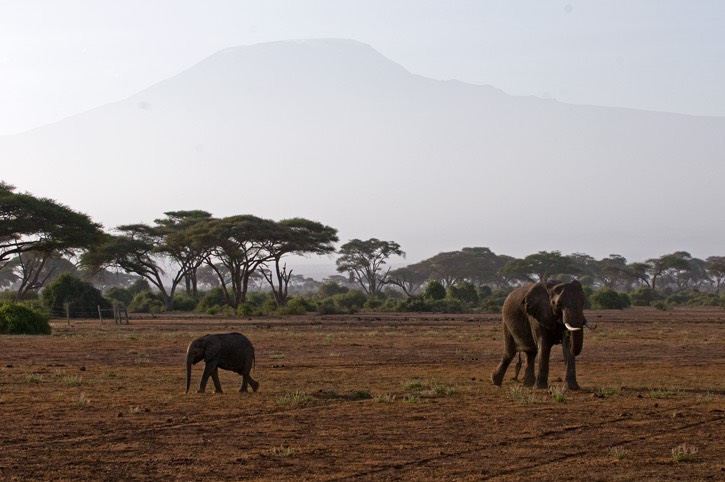
On the way to the gate we came across a jackal and a new mammal species for us: a bat-eared fox with two cubs! They were funny looking creatures, with very large ears, so we felt they were aptly named.
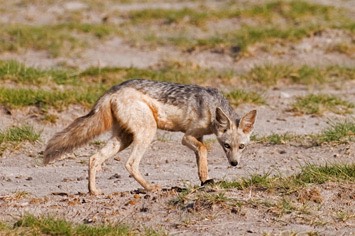
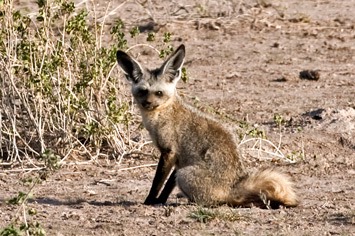
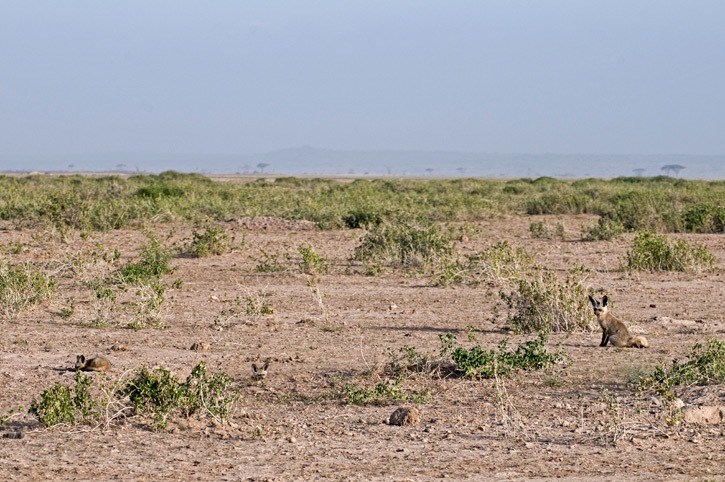
After leaving Amboseli, the first part of our drive was on dusty tracks again, and we were very pleased to reach the main Nairobi to Mombasa highway near Emali. The Chinese recently rebuilt the highway, so that driving on it was very pleasant. The only problem was that the locals drove like madmen, as there were no potholes to slow the cars down any longer. We had to be very vigilant at all times, as cars were overtaking whenever it was possible, and sometimes in places where it wasn’t really possible! We had lunch at the Sikh temple in Makindu, where all travellers are welcome to eat and have showers for a small donation. Mick enjoyed a shower, while the ladies’ showers didn’t seem to work, so Maren carried on dirty, hoping for a working shower in Tsavo East. Just before leaving, we bumped into a family we had met in the Masai Mara, while we were watching the serval. We wouldn’t have recognised them, but our car obviously stood out rather well, so they remembered us instantly!
In the early afternoon we arrived at the Voi gate of Tsavo East National Park. Tsavo is the biggest national park in Kenya, and the Nairobi-Mombasa highway splits it into two parts: Tsavo East and Tsavo West, with the eastern part being much larger. Tsavo is also well known for its man-eating lions, which allegedly killed and ate around 130 railway workers during the construction of the railway line to Nairobi in 1898. This story has also been made into a movie – “The ghost and the darkness” with Val Kilmer and Michael Douglas. Today, there are no more problems with man-eating lions, but Charles was convinced that the lions still liked the taste of human meat, and he was not too happy to be left in camp alone!
Tsavo East was very dry, and due to its laterite soil everything is red. This means that even the elephants are red, as they have red mud baths and then dust themselves with the red soil. The public Ndololo campsite is not far from the Voi gate, so that we only had a short game drive before setting up camp. Nevertheless, we spotted Grant's gazelles and waterbucks and managed to see our first red elephants, which was very exciting! It seemed an appropriate Christmas decoration to see the red elephants in the green vegetation of the few swampy areas.
